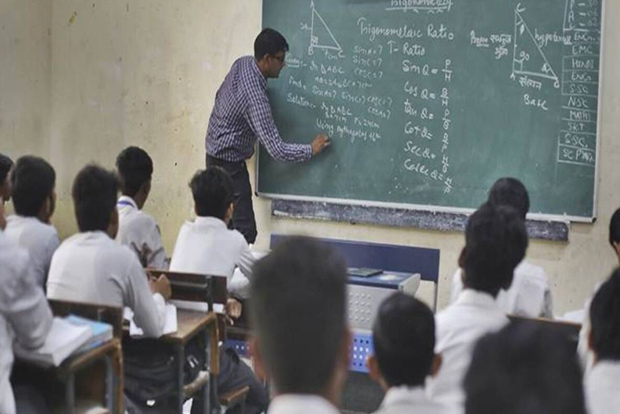Education must be treated as an essential
Disruptions to education resulting from COVID-19, violent conflict, and climate change are leaving crisis-affected girls and boys ever-further behind. It is hard to imagine a better investment than keeping these children in school
COVID-19 is pushing the world to the brink. The pandemic has killed more than 4.7 million people, caused global GDP to decline by 4.6% in 2020, and pushed 119-124 million more people into extreme poverty. Today, nearly one in three people globally do not have enough food to eat, while conflicts and climate-change-induced natural disasters are forcing families from their homes. And the resulting school disruptions are leaving crisis-affected children ever-further behind.
When world leaders launched Education Cannot Wait, the United Nations’ global fund for education in emergencies and protracted crises, at the 2016 World Humanitarian Summit, 75 million children and youth globally were being denied their right to an education as a result of conflict, displacement, and natural disaster. Fast forward to the present. As COVID-19 continues to ravage the world’s least-developed countries, and with other crises on the rise, the number of children who are out of school has increased to an estimated 128 million. This is a rough estimate that will likely increase as the world’s multiplying crises deepen, and it is already more than the population of Japan, or the populations of France and Italy combined. At the same time, two in three students globally are still affected by school closures. Many of them, particularly girls, may never return to full-time education, raising the risk of a surge in child marriage and child labor.
Education is the foundation for peace, stability, economic prosperity, and social progress. With the pandemic, climate change, and geopolitical shifts placing the world at an inflection point that will define the trajectory of human development for generations to come, we must move urgently to make education a top priority. At this year’s UN High-Level Political Forum on Sustainable Development, UN Secretary-General António Guterres asked leaders to rethink how we allocate resources and respond to global challenges as we race to achieve the Sustainable Development Goals by 2030. It is hard to imagine a better investment than education.
For starters, investing in education for all – including crisis-affected children – could contribute significantly to long-term economic growth. Studies indicate that each additional year of learning can raise incomes by 8-10%. Likewise, the World Bank estimates that enabling every girl to complete 12 years of education could generate an additional $15-30 trillion in lifetime productivity and earnings.
Research also shows that violent conflict drops by up to 37% when girls and boys have equal access to education. And closing gender gaps in education can contribute to curbing climate change and hunger, and to fostering respect for human rights. A generation of women professionals and leaders could be empowered to break cycles of poverty, violence, displacement, and hunger. In fact, the economic gains from expanding girls’ education alone could far outweigh the financial costs of the necessary investments, yielding benefits lasting for generations.
For businesses, this economic windfall promises to create new markets, promote stability in regions where there is now chaos, and strengthen the long-term viability of investments. Entrepreneurs in Africa, Asia, and Latin America will gain pathways to establish a new generation of enterprises.
For governments, the promise of faster economic growth means more revenue. And more resources will enable policymakers to respond more strongly to the climate crisis, bolster environmental protection, build roads and productive infrastructure, and provide basic health care, education, and social services. But children caught in conflict zones and on the brink of starvation will reap the greatest benefits. For them, quality education means safe spaces to learn, mental-health services, school-based nutrition programs, and access to water and sanitation. Just $220 annually can provide a child living in a crisis setting with a holistic quality education, whereas internal displacement costs the global economy over $20 billion a year, or about $390 per displaced person.
While some progress has been made, more needs to be done now. At a recent global roundtable co-organised by the United Kingdom, Canada, the UN Refugee Agency (UNHCR), and Education Cannot Wait, the UN Special Envoy for Global Education, Gordon Brown, highlighted World Bank estimates indicating that meeting the educational needs of refugee children alone will cost over $4.8 billion per year. We must catalyse the investments needed to fill this gap. Specifically, public donors, the private sector, and key stakeholders such as philanthropic foundations, high-net-worth individuals, and local governments must urgently mobilise hundreds of millions of dollars in additional funding for Education Cannot Wait. As we rethink humanitarian and development interventions in the twenty-first century, education must be central to our response to the multiplying disruptions associated with COVID-19, violent conflict, and climate change. We must take bold action now. For the millions of children whose future is threatened by today’s crises, education cannot wait.























